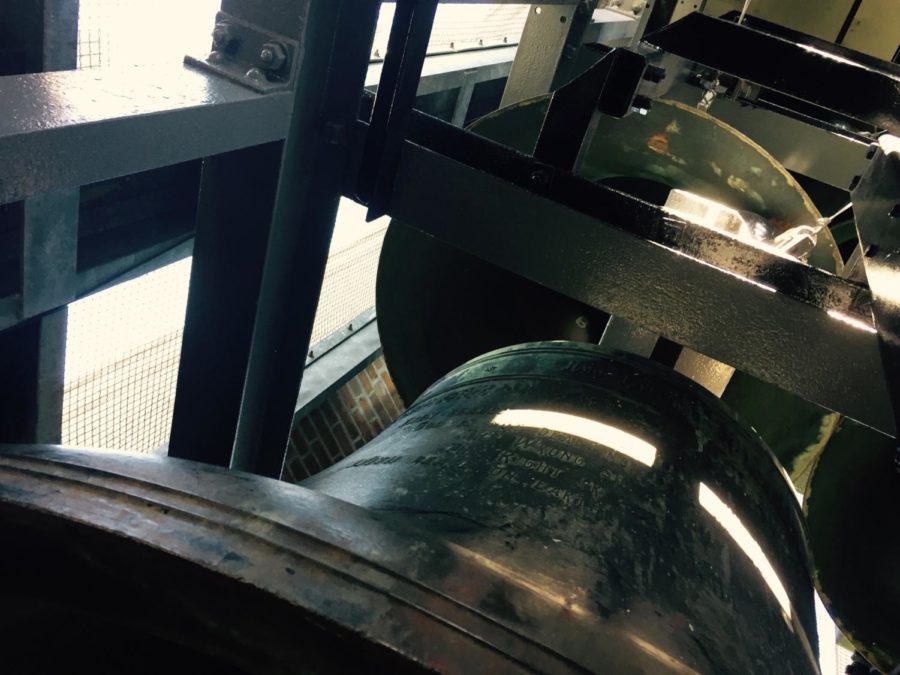Bell casting to be held for model Campanile
April 6, 2018
The first bell casting at Iowa State will celebrate “breaking the ground” on the Campanile-Carillon Model, a project to create a mobile, musical model of the Iowa State Campanile.
The public event, which will take place at 4 p.m. on Tuesday at the Campanile Room in the Memorial Union, will allow people to witness the Campanile-Carillon Model’s first bell being cast in bronze.
“It is really a historical moment from so many different aspects,” said Tin-Shi Tam, Iowa State’s carillonneur. “Not only is [the event] meaningful to the project, but also it will be educational to really understand what’s actually behind how the bells are made.”
At the event, Richard Watson of Meeks, Watson and Company will give an informational presentation on the art of bell making. Meeks, Watson and Company is tasked with creating all 27 bells for the model.
Meeks, Watson and Company is the only carillon bell maker in North America, according to Watson. This means the event will offer a rare opportunity to learn about the art of bell making from an expert bell founder.
To prepare for the bell casting at Iowa State, Meeks, Watson and Company will construct the bell’s mold at their foundry in Georgetown, Ohio. Watson said the bell’s mold will be built out of a sand-based mixture that hardens to a solid similar in density to soft sandstone.
They’ll bring the mold of the bell to Iowa State to be cast during the event. Those who attend the event will watch a live stream of the casting which will simultaneously occur at the ISU metal casting laboratory. Watson will detail the process as it occurs. According to Watson, the casting process is simple, aside from some technicalities to ensure it is done correctly.
“As long as you can make a mold with the cavity inside of it in the shape of what you want to cast, in this case the bell, then you can pour the metal into it,” Watson said. The bronze metal that will be poured is a mixture of copper and tin. It must be heated to 1,000 degrees Fahrenheit in order to become liquid to pour into the mold.
After the metal is poured, it will be allowed to cool for about a day. Watson said it’s important to let the bell cool down slowly to ensure it will produce a proper musical ring. According to Watson, the sand base helps to provide good insulation which keeps the cast from cooling down too fast. Following the event, the bell will be brought back to their foundry in Ohio to be smoothed out and tuned among further preparations.
There will be open tours of both the Campanile and the ISU metal casting laboratory (1098 Black Engineering) from 3 to 4 p.m.
This event marks a milestone for the Campanile-Carillon Model project. “It’s just like when you build a building and you first start construction, and you have a ceremony to break the ground. For building a carillon, casting bells is just like breaking the ground,” said Tam.
The idea was originally conceived by Tam in early 2015. Since then, multiple semesters of engineering students have worked to create a design for the structure of the model. Each semester of students up until now has perfected the design. The rest of the 27 bells and the structure of the model is expected to be fully built by the end of November this year.
The model will be used for Iowa State outreach events around the country. There are also plans to use it in musical performances at Iowa State because of its mobile capabilities.
“[The model] will [allow] people who cannot climb all the way up into the Stanton carillon [in the Campanile] … to be able to see how manually an operating carillon is connected together,” Watson said. “[It will] give people an appreciation for all that goes into building a carillon and making good carillon bells. I think it’s a great project and will be the opportunity for years and years for people to learn about the carillon close up.”
What: Campanile-Carillon Model bell casting event
When: Tuesday, April 10
Campanile tours/ISU metal-casting lab open house — 3-4 p.m.
Bell Casting Program — 4-5 p.m.
Reception — 5 p.m.
Where: Campanile Room in the Memorial Union







